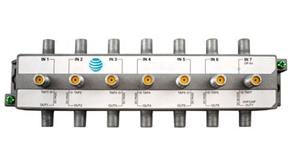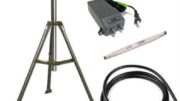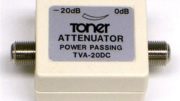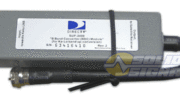Thanks to Signal Pro Rob Young for the idea for this article!
This one goes out to the commercial installers out there. While home users might have need for this kind of information, it’s much more common for commercial installations. There’s no such thing as a “zero-dB tap” and I’ll explain why.
First, a little bit about taps
A tap is also known as a “directional coupler.” It’s a special kind of splitter where the signal is stronger on one output than on the other. Traditionally, you find taps in commercial installations. They’re used in a very specific instance. If you’re running very long cables, you’re aware that you have to be careful of signal loss. As signals travel down a cable, they get weaker. But, you can’t just amplify signals to a ridiculous degree. If the signal is too strong when it reaches a receiver, it will overload the receiver and things won’t work. So, what you do is amplify the signal a whole bunch and use a tap to make one of the outputs weaker. That weaker output is just the right level to work with your receivers.
Tap values
Traditionally when you buy a tap, you’re buying one that has a specific “tap value.” That tap value is defined as the difference between the stronger output and the weaker output. You use taps with a higher value if you’re closer to the amplifier, and taps with a lower value as you get closer to the end of a long run. The goal is to allow your receivers to get the signal level they need… not too much and not too little.
Typically, taps run from about 16dB to about 6dB. There’s also technically a 3dB tap, but since the loss through the tap is always 3dB, a 3dB tap would have the same output level on both outputs. That would mean it’s just a typical splitter.
However, there’s no such thing as a 0dB tap, and I’ll explain why.
Here’s why there’s no 0dB tap.
Every time you split a signal, there’s always loss. You split a signal, you’re cutting that signal in half. “3dB loss” is just the technical term for having half the signal. It’s technically impossible to split a signal and have no loss at all. No loss, that’s just another term for “0dB loss.” It just can’t be done.
But what about amplifying? Yes, you can add an amplifier to a tap and restore that loss. So, you could have an amplified tap that has a 0dB net loss. But out in the world we don’t use amplified taps. We keep the amplifiers separate from the taps. Amplifiers always add noise to a line and you would never add an amplifier if you didn’t need it. While you can always boost the signal level, you can never get rid of noise that you add to a line. That’s why amplifiers should be used sparingly. It’s better to plan your system properly with correct tap values than to use amplifiers when you don’t need one.
Still have questions? Call the experts
If you have questions about commercial installations, we can help! We have over two decades of experience with commercial satellite installations. We have experts on staff who are certified DIRECTV and DISH installers. We’ve planned some of the largest satellite installations on the planet. Best of all, our customer service is available direct to you!
Call us at 888-233-7563 during East Coast business hours. You’ll reach an expert who will give you their direct contact information. No more call centers, no more scripts. Call us, or if it’s after hours fill out the form below. We’ll get right back to you!





